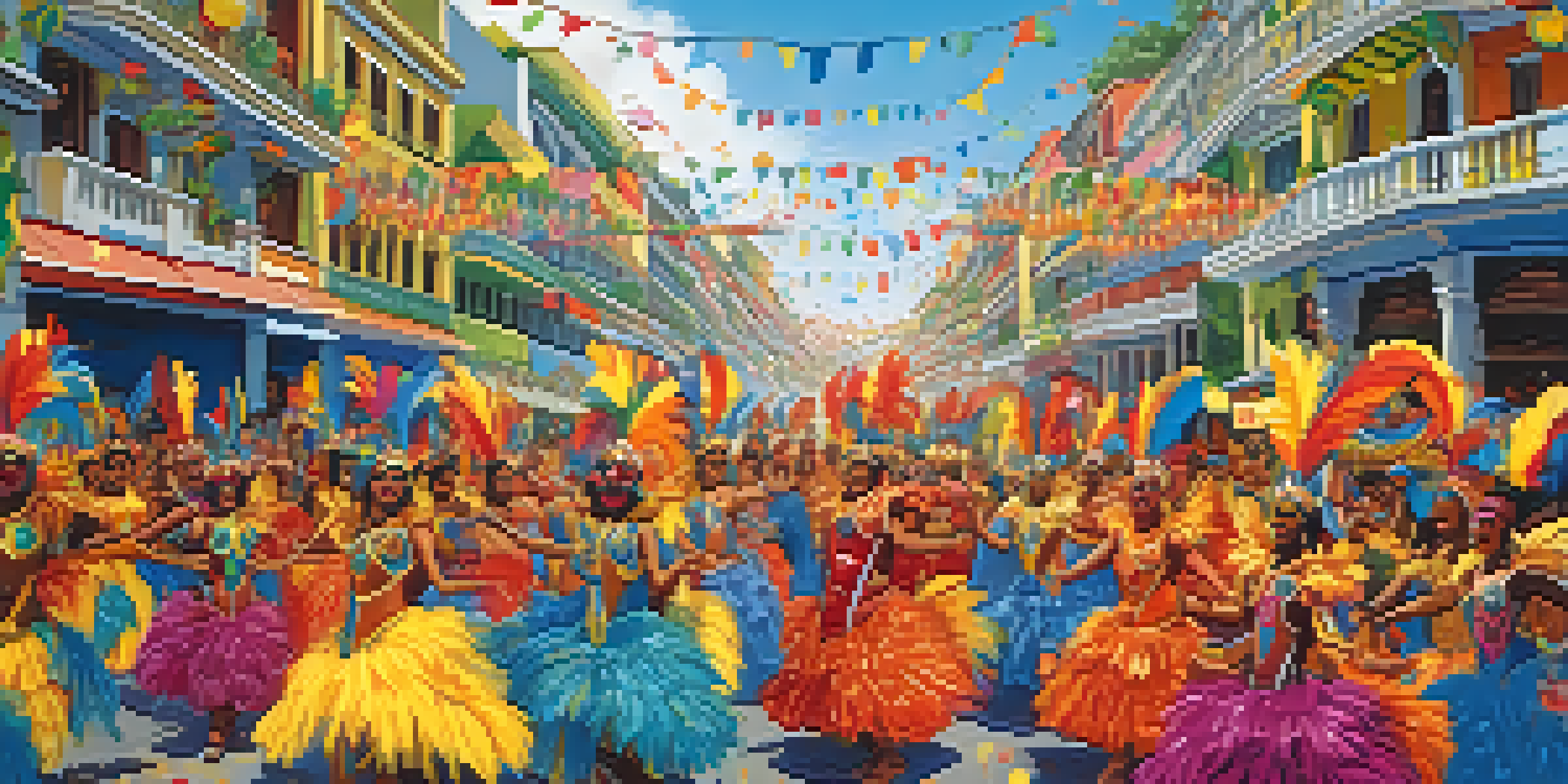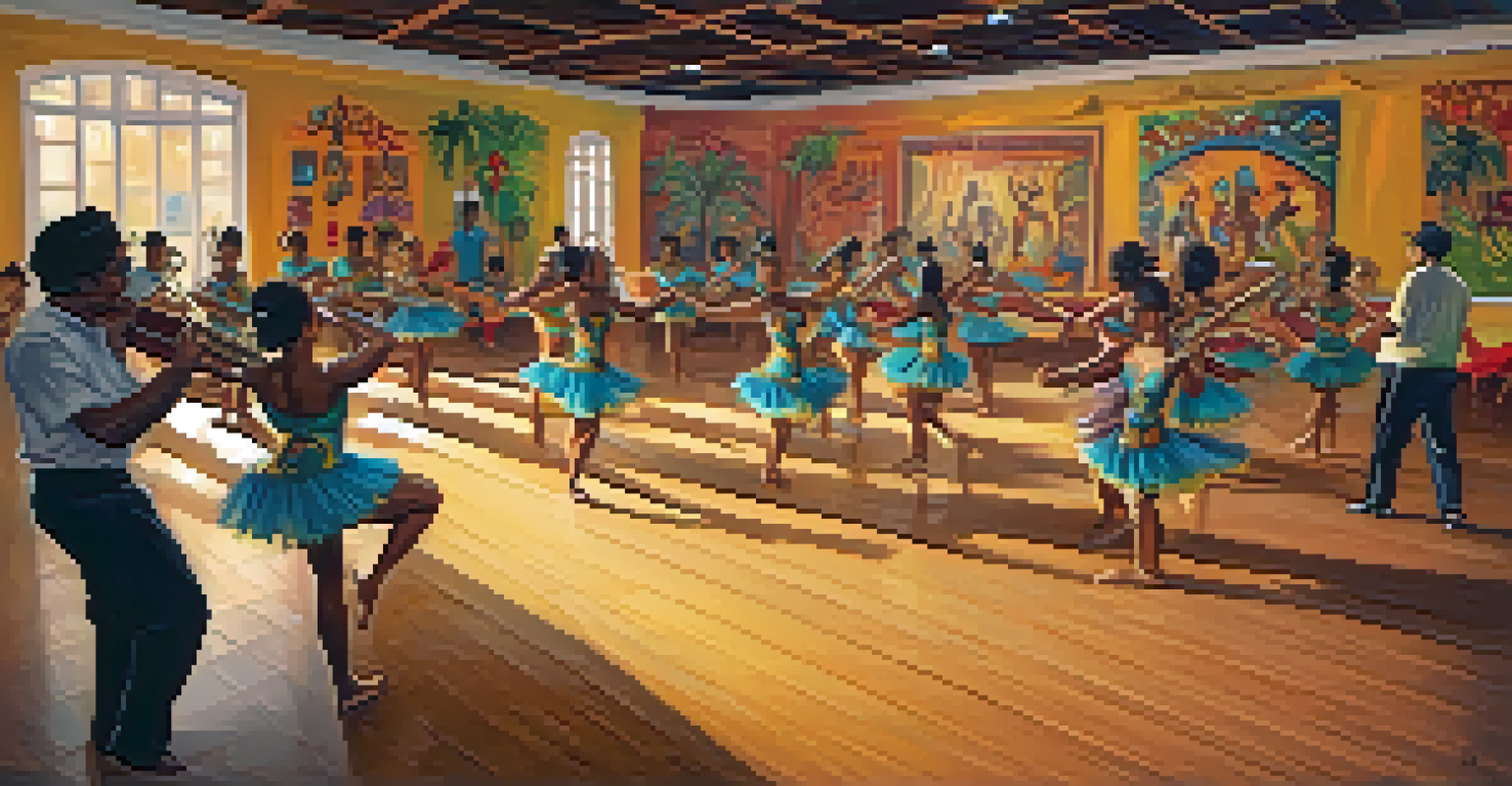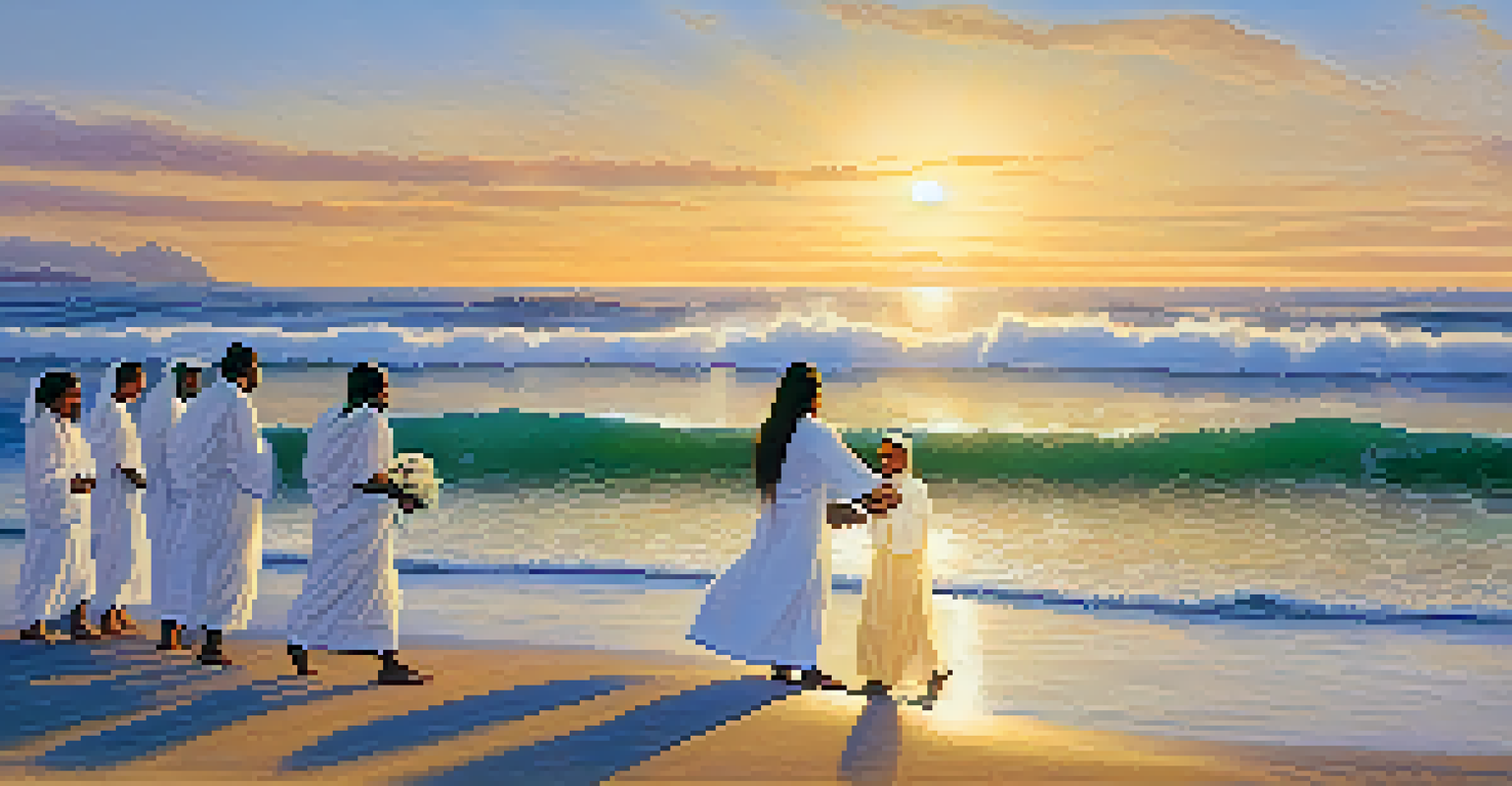Orixás and Samba: Celebrating Afro-Brazilian Culture in Rio

The Roots of Afro-Brazilian Culture in Rio
Afro-Brazilian culture is a beautiful tapestry woven from the threads of African traditions, indigenous customs, and Portuguese influences. It flourishes primarily in Rio de Janeiro, where vibrant festivities and deep-rooted rituals come together. This cultural blend is most evident in the music and dance forms that define the city, particularly samba, which has become synonymous with Brazilian identity.
Music is the shorthand of emotion.
The arrival of enslaved Africans in Brazil during the 16th century brought with it a rich array of spiritual beliefs and traditions. The Orixás, or deities from the Yoruba religion, play a crucial role in these beliefs, connecting followers with their ancestral roots. Understanding this context enriches our appreciation of samba, as it serves not just as entertainment but as a spiritual and cultural expression.
In Rio, you can see the influence of these Orixás during festivals like Carnival, where samba schools parade through the streets, embodying tales of resilience and cultural pride. This vibrant celebration showcases the connection between music, dance, and spirituality that defines Afro-Brazilian culture.
What Are Orixás? Understanding Their Significance
Orixás are powerful deities that represent various natural forces and aspects of life, each with distinct personalities and attributes. They are integral to Candomblé, an Afro-Brazilian religious tradition that honors these deities through offerings, rituals, and dances. Each Orixá is associated with specific colors, symbols, and elements, making them unique and deeply revered.

For example, Oxum, the goddess of love and fertility, is often depicted with golden hues and is celebrated for her nurturing qualities. In contrast, Xangô, the god of thunder and justice, is represented with red and white, embodying strength and power. These representations extend beyond the religious sphere, influencing music, art, and community identities as well.
Afro-Brazilian Culture's Rich Tapestry
Afro-Brazilian culture in Rio blends African, indigenous, and Portuguese influences, with samba serving as a key expression of this heritage.
In samba, you can often find references to Orixás, where dancers may pay homage to these deities through their movements and costumes. This synthesis of spirituality and art captures the essence of Afro-Brazilian culture, showcasing how the past remains alive in contemporary expressions.
Samba: The Heartbeat of Rio's Carnival
Samba is more than just a genre of music; it's the lifeblood of Rio's Carnival and a means of cultural expression for many Afro-Brazilians. Originating in the early 20th century, samba evolved from earlier African rhythms and dances, becoming a symbol of resistance and joy for marginalized communities. During Carnival, samba schools compete in elaborate parades, captivating audiences with their choreography, costumes, and live music.
Culture is the arts elevated to a set of beliefs.
The energy of samba is infectious, as it encourages participation and celebration among people from all walks of life. Whether it's in the samba halls or the streets of Rio, the music brings together individuals and communities, showcasing a shared cultural identity. The rhythms of samba resonate with the heartbeat of the city, creating an atmosphere of unity and joy.
Through samba, the stories of the Orixás are told, reminding performers and audiences of their heritage. The intertwining of dance, music, and spirituality during these celebrations creates a rich narrative that honors the past while embracing the present.
The Role of Samba Schools in Preserving Tradition
Samba schools are pivotal in preserving and promoting Afro-Brazilian culture, offering a space for community members to come together and celebrate their heritage. Each school is a microcosm of culture, where music, dance, and tradition are taught and performed. They play a crucial role in the preparation for Carnival, ensuring that the stories of the Orixás and Afro-Brazilian history are passed down through generations.
In addition to hosting dance classes and rehearsals, samba schools often engage in community outreach, addressing social issues and fostering a sense of belonging among participants. They provide a platform for creativity, allowing individuals to express themselves through art while connecting with their roots. This community aspect is essential for maintaining the cultural fabric of Rio.
Orixás: Spiritual Core of Samba
The Orixás are integral to Afro-Brazilian spirituality, influencing music, dance, and community identity through rituals and celebrations.
During Carnival, samba schools showcase their elaborate parades, telling stories through vibrant floats and costumes. Each performance is a tribute to the Orixás, celebrating their significance and reinforcing the links between spirituality and cultural expression.
Celebrating Orixás: Rituals and Festivals
The celebration of Orixás is not confined to Carnival; it permeates various festivals and rituals throughout the year. These events often involve music, dance, and offerings, creating a space for communal worship and cultural expression. Festivals such as the Feast of Yemanjá, where devotees honor the goddess of the sea, demonstrate the blend of spirituality and celebration inherent in Afro-Brazilian culture.
During these festivals, participants dress in colors that represent specific Orixás, offering flowers, food, and prayers. The streets come alive with music and dance, echoing the rhythms of samba that resonate with the spirit of the deities. This deep connection between ritual and celebration exemplifies how Afro-Brazilian culture remains vibrant and relevant today.
By participating in these festivals, individuals reaffirm their cultural identity and heritage, fostering a sense of pride and community. This celebration of Orixás through samba and rituals is a testament to the resilience and strength of Afro-Brazilian culture in Rio.
Samba and Orixás: A Living Tradition
The relationship between samba and Orixás is a living tradition, constantly evolving while remaining rooted in the past. Today's samba musicians often draw inspiration from ancestral stories, blending traditional rhythms with contemporary influences. This fusion creates a dynamic musical landscape that reflects the diversity of Rio's population and the ongoing journey of Afro-Brazilian culture.
Moreover, the representation of Orixás in modern samba music serves as a reminder of their enduring significance. Artists often incorporate themes related to spirituality, love, and community in their lyrics, ensuring that the essence of the Orixás is not lost in the face of modernization. This connection to the spiritual realm adds depth to the music, resonating with audiences on various levels.
Samba's Global Cultural Impact
Samba and its connection to Orixás have transcended borders, inspiring global audiences and fostering appreciation for Afro-Brazilian traditions.
As samba continues to grow and adapt, it remains a powerful vehicle for cultural expression and storytelling. The ongoing dialogue between samba and the Orixás showcases the strength and resilience of Afro-Brazilian culture, inviting new generations to explore and celebrate their rich heritage.
The Global Impact of Samba and Orixás
The influence of samba and Orixás extends beyond Brazil, reaching audiences worldwide and inspiring countless artists and musicians. As cultural ambassadors, samba and its ties to Afro-Brazilian spirituality have helped foster a greater understanding of the richness of this heritage. Festivals and events celebrating samba are held across the globe, connecting people through the universal language of music and dance.
In many cities, samba schools and community groups have emerged, promoting cultural exchange and appreciation for Afro-Brazilian traditions. Workshops, performances, and even online platforms allow people from diverse backgrounds to engage with samba and learn about the Orixás. This global reach emphasizes the importance of preserving cultural heritage while sharing it with the world.

As the world becomes more interconnected, the stories of the Orixás and the rhythm of samba continue to resonate, forging connections that transcend borders. This celebration of Afro-Brazilian culture not only honors the past but also nurtures a brighter, more inclusive future.